BEGINNER’S GUIDE TO RAILROAD SIGNALS: HOW TO READ US TRAIN SIGNALS
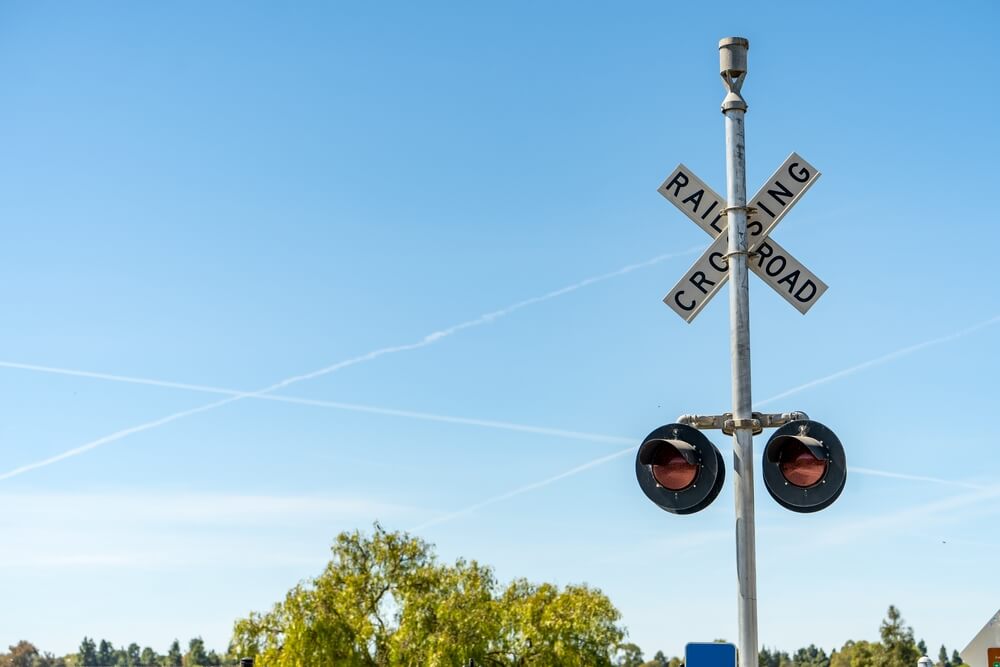
Railroad signals play a crucial role in the safety of train transit. Just like normal highway traffic lights, railroad signals direct the engineman on how to proceed. But these signals are much more complex than normal traffic lights.
This guide breaks down US Railroad signals into three sections: category, type, and how to read. We’ve also included a short glossary of terms to help you understand how to read the signals.
Railroad Signal Categories & Their Function
Railroad signals are categorized into two levels: Permissive and Absolute. Both serve a specific function of either protection or control.
Permissive Signals
Permissive signals use the automatic block signal system to alert train operators there is an obstruction on the tracks ahead. They are considered “permissive” because their function is to protect, not control.
This means that when the automatic block signal is triggered, the train must come to a complete stop. After the stop, they can continue forward at a slower speed, commonly referred to as the “restricted speed.”
The logic is that once the train operator is alerted of the obstruction, they can continue along the track if there is clear visibility ahead. In this scenario, they would have ample time to stop the train before a collision because they’re traveling at a restricted speed.
Absolute Signals
An absolute signal occurs at any point of the track where there’s an interruption. What is considered an interruption? An interruption could be
- A switch or crossing from one track or route to another
- A drawbridge or any other point where the track separates
- Any situation where one train could come in too close contact with another
Absolute signals are sometimes also known as “interlocking plant signals,” or more commonly today, “control points.” They received the name because these signals are typically operated in a control center by members of the Centralized Train Control (CTC).
They are considered “absolute” because their function is to control. When a train reaches the absolute signal, it must come to a complete stop and stay stopped until the signal indicates it’s safe to proceed. Hence, they’ve been coined with the nickname “stop and stay” blocks.
Understanding Railroad Signals: The Terminology
To understand the types of railroad signals that exist and how to read them, there are a few terms that will be helpful to know:
- Signal head: the part of the railroad signal where the visual direction is displayed.
- Aspect: the visual appearance of a signal at a given time, what the train operators see.
- When the lights are displayed green, the aspect is “green.”
- Aspect name: a formal version of the aspect, and an informal version of the indication; it’s the “short form” version of what the aspect means.
- If the aspect is “green,” the aspect name is “clear.”
- Indication: the formal mandate the aspect is displaying.
- If the aspect is “green” and the aspect name is “clear,” the indication is “proceed not exceeding normal speed.”
- Rule: the formal provision as defined by the Northeast Operating Rules Advisory Committee (NORAC)
- It includes the aspect, aspect name, and indication.
Want to learn some more railroad terms? Check out our blog, “Railroad Terms Glossary.”
Aspects, Aspect Names, & Indications
The aspects, aspect names, and indications all work together to instruct the engineman how to proceed. The indication can’t be determined without the aspect name, and the aspect name can’t be determined without the aspect.
In the chart below, we’ve listed out the 4 possible aspects and how they impact the aspect names and indications:
| Aspects | Aspect Names | Indication |
|
Clear | Proceed at a normal speed. |
|
Stop | Stop and stay stopped until instructed to proceed. |
|
Approach or caution | The current stretch is clear but be prepared to stop at the next signal. |
|
Restricted speed | Proceed at a restricted speed. |
5 Types of Railroad Signals
Now that we’ve determined the overarching categories of railroad signals and defined some of the important terminologies, it’s time to jump into the types of railroad signals. For this guide, we’re only going to include the signals that are used by train operators in the US.
1. Semaphore Signals
The semaphore was the first railroad signal to use electricity. The original semaphores used a two-position arm/blade to alert train operators if they must stop and stay (horizontal position), or could stop and proceed with caution (vertical position).
They went through several iterations over time to improve their signaling capabilities but eventually fell out of popular use when new railroad signals were developed. By now, most semaphores have been replaced by modern railroad signals.
If you see one still in use today along the US railroad, it’s likely a three-position upper-quadrant semaphore. They use the same arm/blade system but with 3 positions and a 3-color light system to direct traffic.
Reading a Semaphore Signal
To read semaphores, you must take note of the position of the blade and the color of the light to determine if the route is safe. Here is a simple breakdown of how the position and colors direct train operators:
- When the blade is vertical, the light is green and the train can proceed.
- When the blade is at an angle, the light is yellow and the train can approach, but at a restricted speed.
- When the blade is horizontal, the light is red and the train must stop and stay.
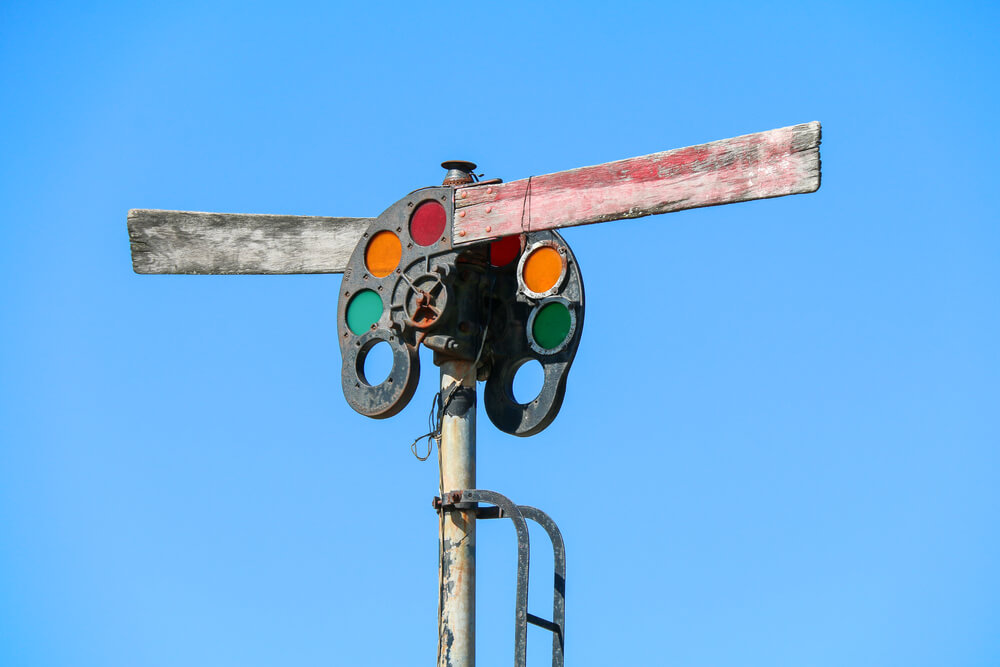
2. Color Light Signals
Color lights are probably the most common signals along the railroad. As many companies started to standardize the railroad signals across the US, color lights became a straightforward method.
These railroad signals have 3 colored lenses arranged vertically like normal highway traffic lights. Unlike traffic lights, color lights are positioned with green at the top, yellow in the middle, and red at the bottom.
Another popular form of color lights is tri-light signals. Tri-lights use the 3-color system to flash red, yellow, or green, but they’re positioned in a triangle on a circular background instead of a traffic head.
Reading Color Light Signals
On both signal heads, the color of the lights informs operators how to proceed. In all cases,
- Green indicates clear, the train can proceed.
- Yellow indicates approach, but at a restricted speed. Be prepared to stop at the next signal.
- Red indicates stop, the block is currently occupied.
3. Color Light Signals
Searchlights are unique signals because they only use a single lamp, but they can still flash aspects of green, yellow, and red using rotating lenses. They were developed as an alternative to traditional color light signals and became popular in the 1920s because of their simple, clean appearance.
Eventually, searchlights fell out of popularity because they required frequent — and expensive — maintenance. According to the Code of Federal Regulations, searchlights need to be inspected once every 6 months, and repairing any issues with the lenses is costly, so like semaphores, searchlights are starting to be replaced by other railroad signals.
How To Read Searchlight Signals
Though there’s only a single bulb, the rotating lenses allow searchlight signals to use the 3-aspect color signaling. Therefore, the aspect names and indications read the same as color lights.
Searchlight signal indications:
- Green indicates clear.
- Red indicates stop and stay.
- Yellow indicates approach.
- Lunar white indicates restricted speed.
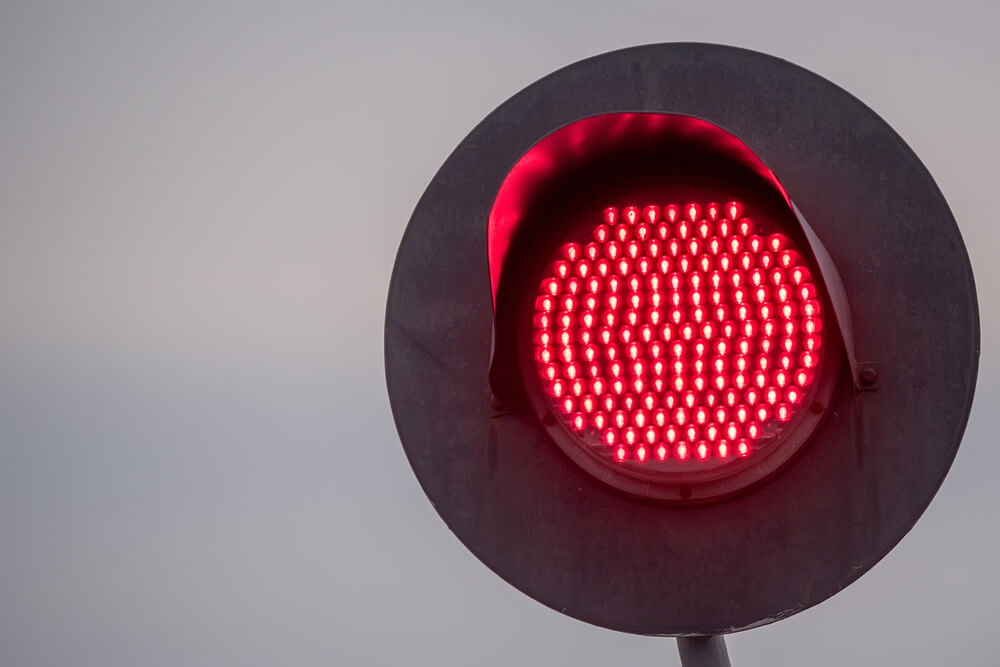
4. Position Light Signals (PLs)
Position lights, sometimes called “three-lens signals,” were developed by the Pennsylvania railroad! These signals use 7 lights mounted on a large, circular background. They’re referred to as “three-lens signals” because each indication is given using 3 lights.
Reading Position Lights
Unlike color lights, position lights only use 1 color. As the name implies, it’s the position of the lights that inform train operators how to proceed. In total, these signals can give 4 indications. (You might notice 3 of the 4 resemble the position of old semaphore blades!)
Position light indications:
- Clear is indicated by 3 bulbs lit in a vertical row.
- Stop and stay is indicated by 3 bulbs lit in a horizontal row.
- Approach is indicated by 3 bulbs lit at an angle pointing up to the right.
- Restricted speed is indicated by 3 bulbs lit at an angle pointing down to the right.
Even though position lights don’t use colors, enginemen often refer to them as colors out of habit. For instance, they might see the vertical row and think “green,” even though green isn’t actually displayed on the signal head. Following that model, green is clear, red is stop, yellow is approach, and lunar white is continue at a restricted speed.
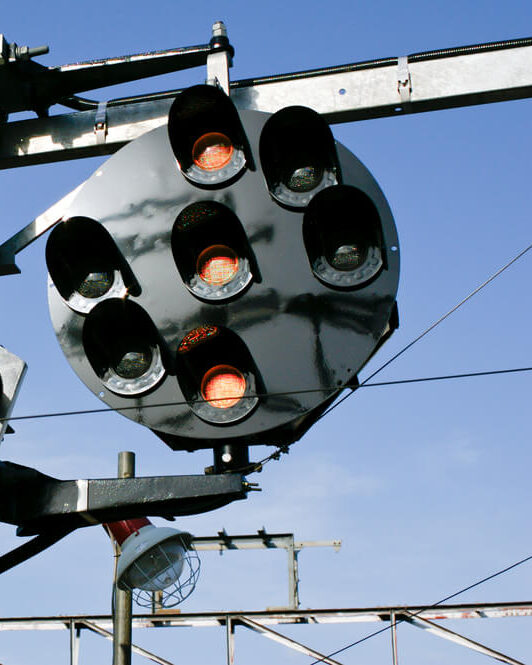
5. Color Position Lights (CPLs)
There are 2 major differences between position lights and color position lights. The first is that CPLs use color aspects! The second is that these signal heads do not have a center bulb. This means that color position lights will only use 2 bulbs to indicate direction.
Reading Color Position Lights
Besides the fact that there is no center light on the signal head, color position lights are read the same as position lights. Since colors are displayed, most operators use them to refer to the signal indication.
Color position light indications:
- “Green” is 2 vertical lights & means “clear”.”
- “Yellow” is 2 diagonal lights pointing up to the right & means “approach.”
- “Red” is 2 horizontal lights & means “stop.”
- “Lunar white” is 2 diagonal lights pointing down to the right & means “restricted speed.”
At this point, you should have a basic understanding of the most common railroad signals in the US. Keep in mind, the concept of railroad signaling is complex, but you can use this beginner’s guide to help you learn how to read railroad signals.
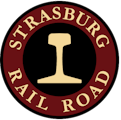
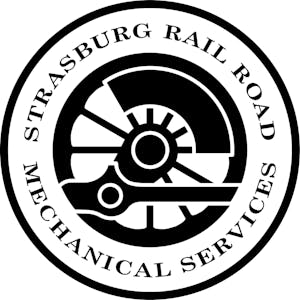 Go behind the scenes on a tour of our renowned mechanical shop and learn all about how we build and refurbish our historic trains!
Go behind the scenes on a tour of our renowned mechanical shop and learn all about how we build and refurbish our historic trains!